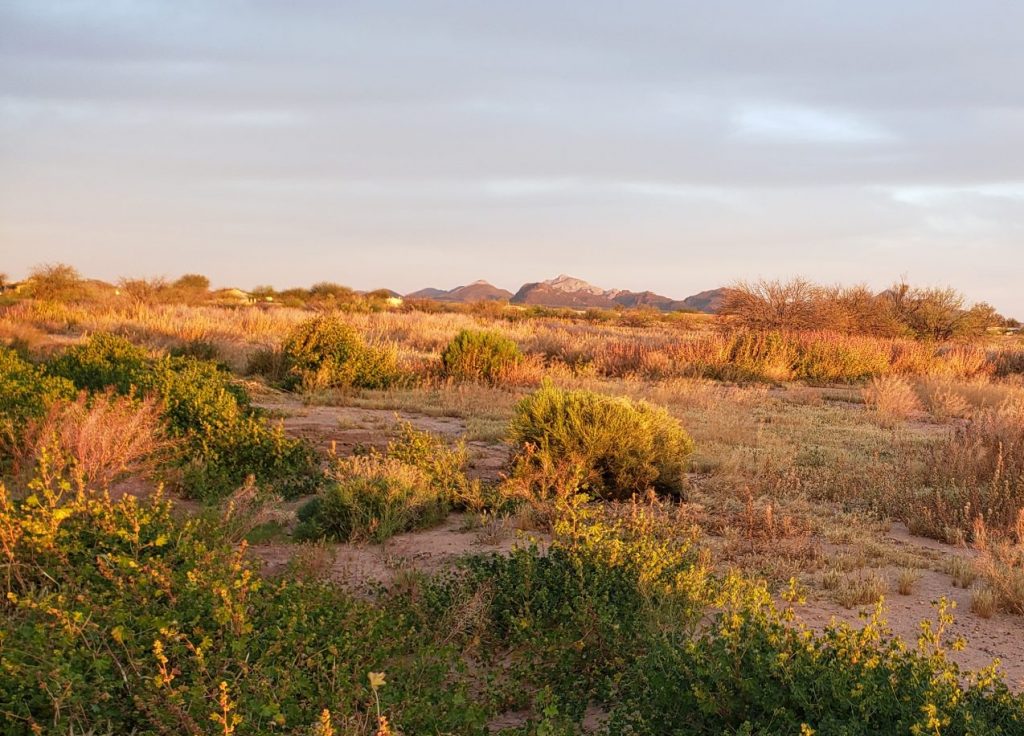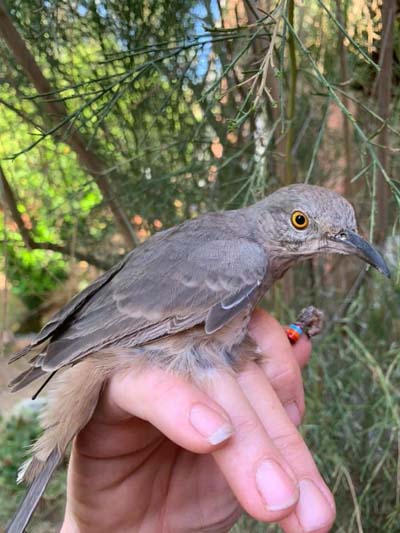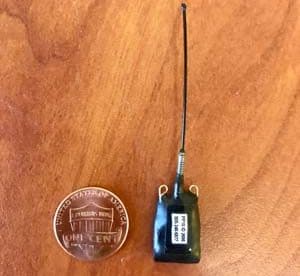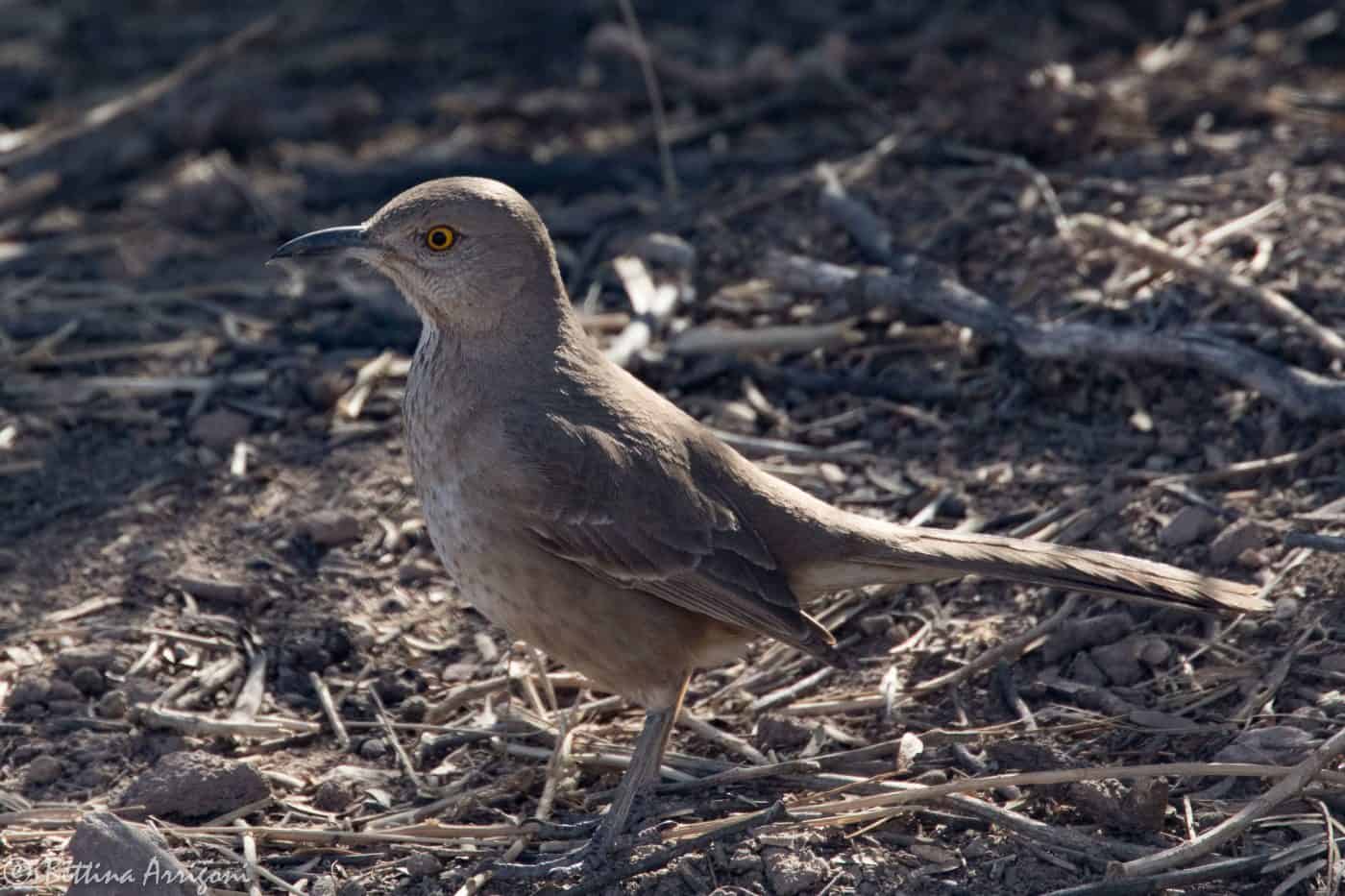By Corrie Borgman, Landbird Biologist, U.S. Fish & Wildlife Service Migratory Birds Program

Unless you live in the desert southwest, you may have never seen a Bendire’s Thrasher. You may have never heard its ceaseless warbling ramble across the mesquites, among the yucca. You may have never caught a brief glimpse as it hustled on the ground between shrubs, or picked through the soil for insects or seeds. Even if you do live in the desert southwest, it’s still uncommon to encounter this desert dweller! Occurring patchily and rarely, its secretive habits and cryptic plumage make it difficult to detect. In a flash of brown, even its bright, goldenrod eye disappears into the desert. However, numerous researchers from different organizations across its range are on the alert. The Desert Thrasher Working Group, a collaboration of many partners across the southwest aims to learn much more about this secretive bird and its ecology so that future generations may still have the pleasure of encountering it.

Bendire’s Thrasher is a species of conservation concern as identified by numerous State and Federal agencies including the Sonoran Joint Venture. It finds itself on the “Red List” (i.e., top priority) by Partners in Flight, as well as the International Union for Conservation of Nature (IUCN) due to significant declines across its range. Breeding Bird Surveys show an annual decrease of 4.5% since 1967, resulting in an estimated loss of 86% of the total population size since that time. The Partners in Flight Landbird Conservation Plan predicts that within 18 years, the population may decline again by 50%. We need to take urgent action to conserve this species. However, many aspects about the life history and biology of Bendire’s Thrashers are unknown. Complicating matters, what little we do know about the species comes from research in the United States, despite significant portions of its range occurring in Sonora, Mexico and to a lesser extent, Chihuahua, Mexico.
The migratory pathways of Bendire’s Thrashers are virtually unknown. The more northerly parts of the population seem to migrate, but others may be year-round residents. Exactly which portions of the population migrate, and when and where these migrant populations go is in question. Understanding migratory patterns and habitat locations will allow for better planning on where to invest resources into Bendire’s Thrasher conservation.

In the spring of 2019, the Arizona Game and Fish Department and the U.S. Fish and Wildlife Service collaborated with the Sonoran Joint Venture, Tucson Audubon Society and the City of Tucson to launch a pilot project to investigate the movement patterns of Bendire’s Thrashers in southern Arizona. Bendire’s Thrashers weigh in at about 60 g (slightly smaller than a robin), making them too small for traditional GPS technology used on bigger birds like Sandhill Cranes and Golden Eagles. However, technology is advancing, and smaller Lotek Pinpoint GPS units weighing only 1 g are available for small birds. These tags have been used previously to study the migration patterns and connectivity of species such as Ovenbirds, Veery, and Whip-poor-wills. During this pilot season, we fitted seven Bendire’s Thrashers with these GPS tags in spring 2019. Birds were tagged during the breeding season with the hope territorial birds will return to their same breeding territories in 2020, allowing us to retrieve the tags. The tags record weekly GPS locations of birds between August (when they typically disappear from their breeding territories) and February (when they typically return). If successful, we aim to expand this work into other parts of the species range (New Mexico and Nevada, for example).

Even the return of a few tags will provide specific and valuable information about the timing and locations of migration, as well as important information on wintering areas. Just a single location point in Mexico could be useful in informing targeted search efforts for future on-the-ground surveys. We hope this project can aid in the conservation of this desert species. We graciously thank those that helped in these efforts: Jennie Macfarland and Tim Helentjaris of Tucson Audubon coordinated volunteer monitoring of birds in our study area, and the City of Tucson provided access to our study plots. We thank Olya Phillips, Diane Tracy, Shannon McNeil, Sydney Smith, and Melissa Folsom for their valuable assistance with trapping in the field.

